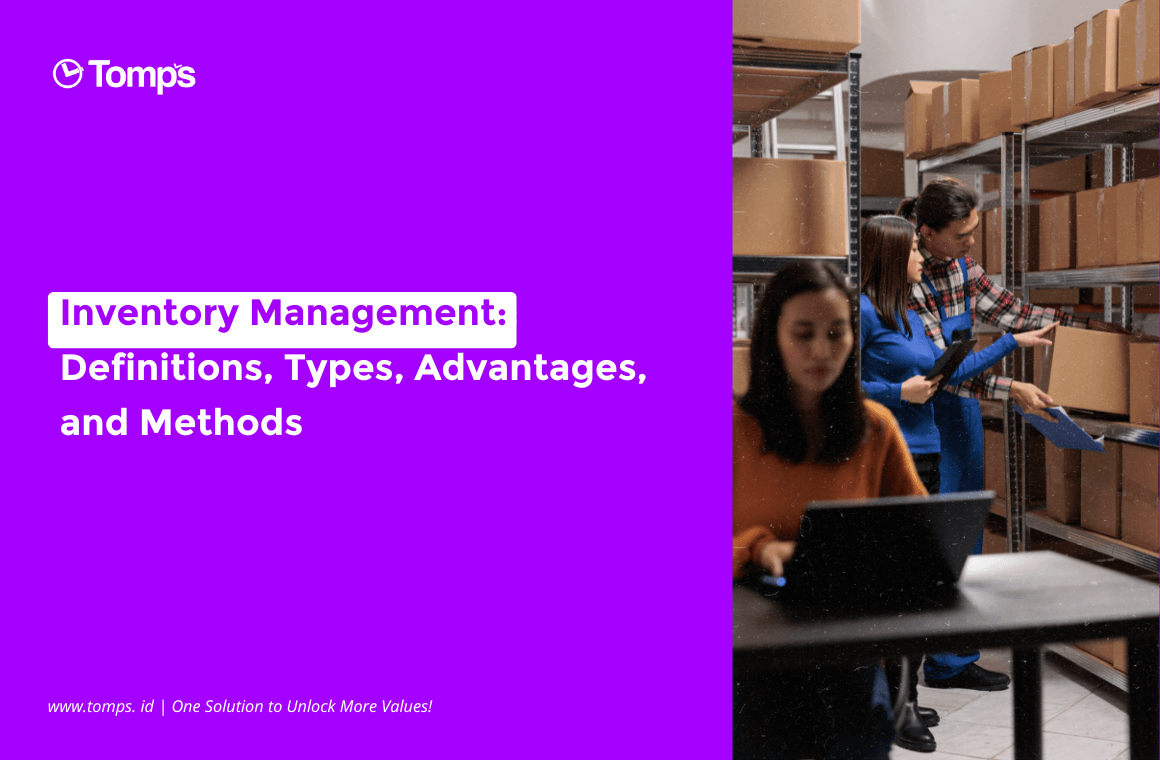Asset management is one of the crucial concepts in today's business world. In an era where competition is fierce and change is rapid, asset management is a factor that determines the success of a company.
What is Asset Management?
Before we go any further, it is important to understand what asset management is. Asset management refers to the process of planning, procuring, using, maintaining, and disposing of a company's assets. These assets can be physical such as buildings, machinery, vehicles, or non-physical assets such as patents, trademarks, or even data.
Asset management also includes monitoring asset performance, timely maintenance, and making smart decisions regarding investments in new assets or improvements to existing assets. The goal is to increase efficiency, reduce costs, and optimize the use of assets to support business objectives.
Quoting from the IDX Channel website, here are some definitions of Asset Management based on experts.
Danylo and Lemer (1999) say that asset management is a methodology to efficiently and fairly allocate resources to achieve goals and objectives.
Hariyono (2007), says that asset management is a process for managing the demand and acquisition of guidance, the use and sale of assets to capitalize on service potential, and managing asset lifetime risks and costs.
Gima Sugiama (2013), also says that asset management is the science and art of guiding wealth management which includes the process of planning asset needs, obtaining, inventorying, conducting legal audits, valuing, operating, maintaining, renewing or eliminating to transfer assets effectively and efficiently.
The Importance of Asset Management
Let's discuss why asset management is so important in modern business:
Improving Operational Efficiency Good asset management helps companies to optimize the use of their assets. This includes reducing machine downtime, maximizing asset life, and avoiding waste of resources. By managing assets well, companies can save operational costs and increase productivity.
Better Decision Making Effective asset management also provides relevant data for better decision-making. With accurate monitoring of asset performance, companies can determine when the time is right to renew or replace assets, thus avoiding large losses due to damage or obsolescence.
Improving Reliability and Safety Regular maintenance and asset monitoring also help to improve asset reliability. This is especially important in high-risk industries such as manufacturing or energy. Reliable assets also mean more safety for employees and the environment
Investment Optimization Good asset management helps companies plan better investments. With a deep understanding of the lifespan and condition of assets, companies can allocate their resources more efficiently, avoid unnecessary investments, and focus on assets that provide the greatest value.
Compliance and Reporting Businesses today must also comply with various asset-related regulations, such as environmental regulations, safety regulations, and accounting standards. Good asset management helps companies to fulfill legal obligations and produce accurate reports.
Improving Customer Satisfaction In many cases, good asset management can lead to improved quality of products or services provided to customers. Customer satisfaction is an important factor in maintaining and increasing market share.
Stages of Asset Management
Corporate asset management involves a series of stages that must be followed to ensure corporate assets are managed efficiently and effectively. The following are the stages in corporate asset management:
Asset Identification: The first stage is to identify and record all assets owned by the company, including physical and non-physical assets such as land, buildings, equipment, patents, and trademarks.
Asset Valuation: After identification, it is necessary to assess the value of the asset to determine its actual value. This valuation may involve expert appraisers or use appropriate valuation methods.
Asset Classification: Assets need to be grouped by type, category, or age of use. This helps in more efficient management and maintenance planning.
Asset Planning: At this stage, the company develops a strategic plan for asset management. This plan includes allocation of resources for maintenance, repair, and investment in new assets according to business priorities.
Asset Procurement: If needed, the company procures new assets according to the plan. This could be a purchase, lease, or in-house development.
Asset Maintenance and Repair: Assets need to undergo regular maintenance and repairs according to a predetermined schedule. Preventive maintenance is important to prevent unwanted damage.
Monitoring and Measuring Asset Performance: Assets should be monitored regularly to understand their performance. Data such as remaining service life, energy consumption, and maintenance costs should be analyzed to identify problems or opportunities for improvement.
Asset Destruction or Removal: Assets that are no longer required or are obsolete should be written off or sold in accordance with applicable regulations. This process includes physical destruction or transfer of ownership.
Asset Management Strategy
A company's asset management strategy is a plan designed to efficiently manage the company's assets, maximize asset value, and achieve business goals in a sustainable way. Based on the book "Asset Management Tools and Strategies" published by Tottel Bloomsbury Professional, there are several asset management strategies that can be implemented by companies, namely:
Scheduled and proactive maintenance strategies Companies can design a scheduled and proactive maintenance strategy to ensure that their assets are always in good condition. This strategy involves planning maintenance based on a predetermined schedule and using technology that enables early detection of problems that may occur with assets.
Risk management strategy integrated with asset management Companies can adopt a risk management strategy that is integrated with asset management. This strategy involves identifying, evaluating and mitigating risks associated with the company's assets. This can help avoid asset damage or loss, as well as optimize overall asset usage.
Adopt best practice performance measurement and reporting Companies can improve the effectiveness of their asset management strategies with the adoption of best practice performance measurement and reporting. This strategy involves using relevant metrics to measure asset performance, and reporting regularly on the results of those measurements. This will help companies to identify areas for improvement and opportunities to increase efficiency.
Using the right technology Companies can improve the effectiveness of their asset management strategies by using the right technology according to their needs. This can include the use of asset management systems (AMS), early warning detectors, remote monitoring, and others. These technologies can help with better asset management and increase efficiency in maintenance and repairs.
Develop a recovery strategy Companies should develop a clear recovery strategy to minimize the worst-case impact to their assets. This strategy involves setting up details on how assets need to be recovered and recovery planning to ensure that the company can return to operations as quickly as possible.
In conclusion, the book "Asset Management Tools and Strategies" published by Tottel Bloomsbury Professional offers various asset management strategies that can help companies improve the effectiveness of their asset management. By implementing these strategies, companies can improve their operating performance, prevent asset damage or loss, and be more efficient in operation and maintenance.
An effective asset management strategy can help companies optimize asset usage, reduce costs, improve reliability, comply with regulations, and support sustainable business growth. It is a key element in achieving long-term success in a competitive business world.
Tomps Asset: Enterprise Asset Management Solution
Tomps Asset is one of the products provided by Tomps by Telkom Indonesia. Tomps Asset is designed to assist companies in monitoring and managing physical assets and quality legal aspects by presenting a platform that provides various services related to physical asset management and company inventory. The product includes asset tracking, asset location monitoring, asset data management, master data management, inventory management of finished goods, and raw materials, as well as various other features. By using Tomps Asset, companies can more efficiently manage and monitor all their assets and inventory.
Benefits of Using Tomps Assets for Companies
Easy Asset Tracking: Tomps Asset allows companies to track their assets easily and quickly in real-time. This helps in avoiding loss or inefficient use of assets.
Information Through Maps: Users can easily visualize asset information through maps and get a summary of related information. This makes it easy for users to visually know the location of assets and facilitate searches.
Efficient Asset Management: The product helps companies in asset management such as addition, import, update, approval, and effective management of asset data. This enables companies to maintain complete and accurate asset data.
Master Data Management: Tomps Asset also helps in master data management which includes environment settings, organization settings, asset status, and other categories. This helps in managing greater information regarding the company's assets.
Detailed Asset Information: The product provides complete and accurate information on assets and inventory, which can be accessed through easy-to-use form pages.
The Prominent Features of Tomps Asset are:
- Dashboard
- Map
- Asset Management
- Master Data Management
- Asset and Inventory Management
- Update Asset and Inventory Data
- Inventory Management of Finished Goods and Raw Materials
- Update Inventory Data of Finished Goods and Raw Materials
- Stock-taking Report
- Detailed Asset Information
- Total Asset Type Monitoring
- Book Value Monitoring
- Asset Legality Status
- Access Management
- Geographic Information System
- Asset Summary Report
With the various features provided by Tomps Asset, companies can be more efficient in physical asset and inventory management, increase transparency, and reduce risks associated with poorly managed assets and inventory. This product assists companies in optimally utilizing their assets and complying with applicable legal requirements.
Conclusion
Asset management is a crucial component in modern business that cannot be ignored. In the midst of fierce competition and rapid change, asset management is a determining factor in the success of a company. Asset management encompasses a series of steps and strategies designed to ensure a company's assets are managed efficiently and contribute maximally to the achievement of business objectives.
The asset management process involves the planning, procurement, use, maintenance and disposal of assets, both tangible and intangible. The goal is to improve operational efficiency, smarter decision-making, reliability, legal compliance, and investment optimization. Tottel Bloomsbury Professional's "Asset Management Tools and Strategies" book provides an in-depth look at the strategies and tools that can help companies improve their asset management.
In addition, the Tomps Asset product from Tomps by Telkom Indonesia offers a superior solution in enterprise asset management. With features such as asset location tracking, master data management, and accurate reporting, this product helps companies optimize the management of their physical assets. By adopting the right asset management strategy and utilizing tools like Tomps Asset, companies can improve operational efficiency, reduce risk, and support sustainable business growth. Effective asset management is key to achieving competitive advantage in a rapidly changing business era.
Reference:
Bloomsbury Collections. (2023). Bloomsburycollections.com. https://www.bloomsburycollections.com/home
Shifa Nurhaliza. (2021, December 24). Tugas Asset Management: Berikut Pengertian dan Tujuannya. Https://Www.idxchannel.com/; www.idxchannel.com. https://www.idxchannel.com/market-news/tugas-asset-management-berikut-pengertian-dan-tujuannya







